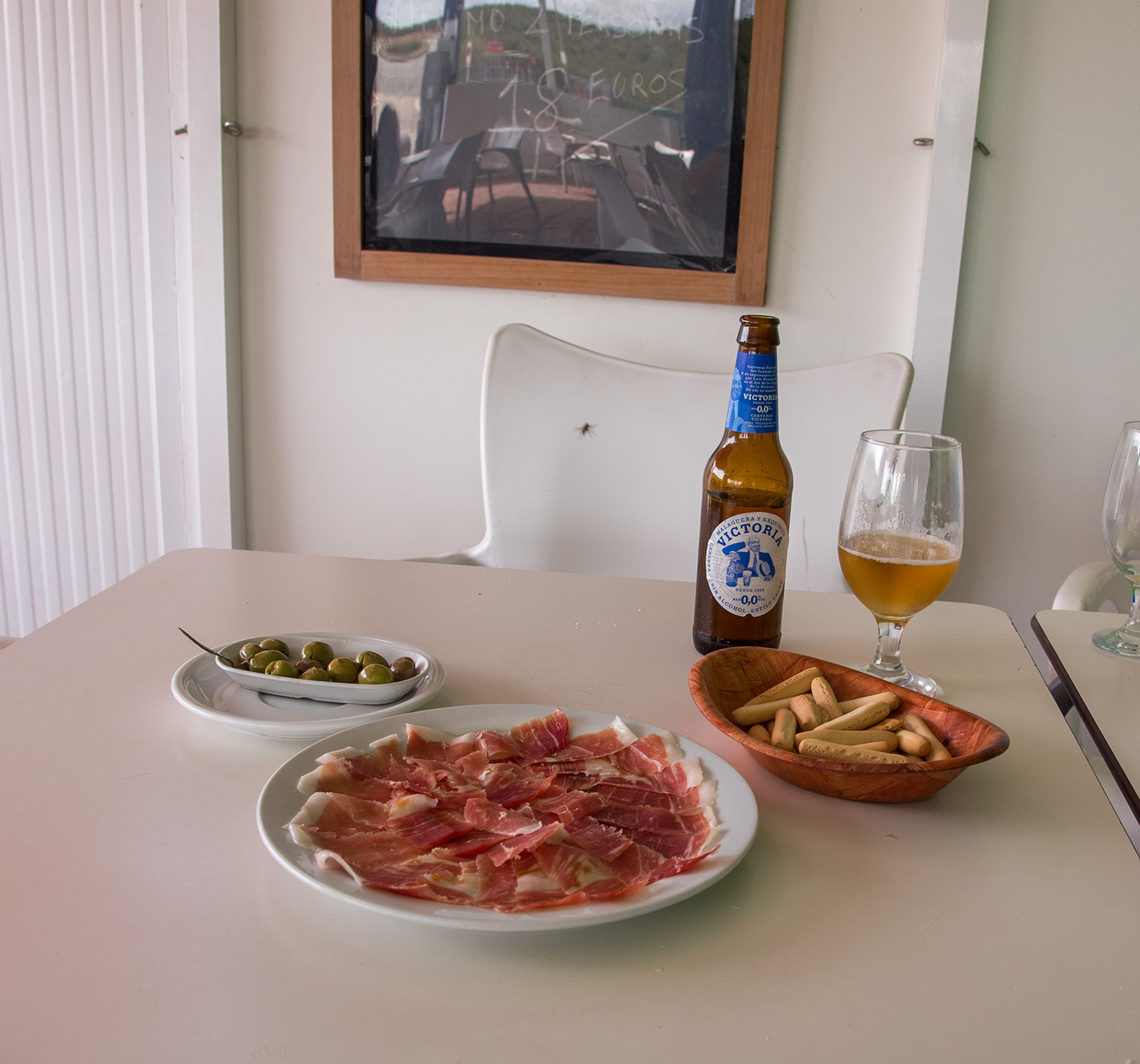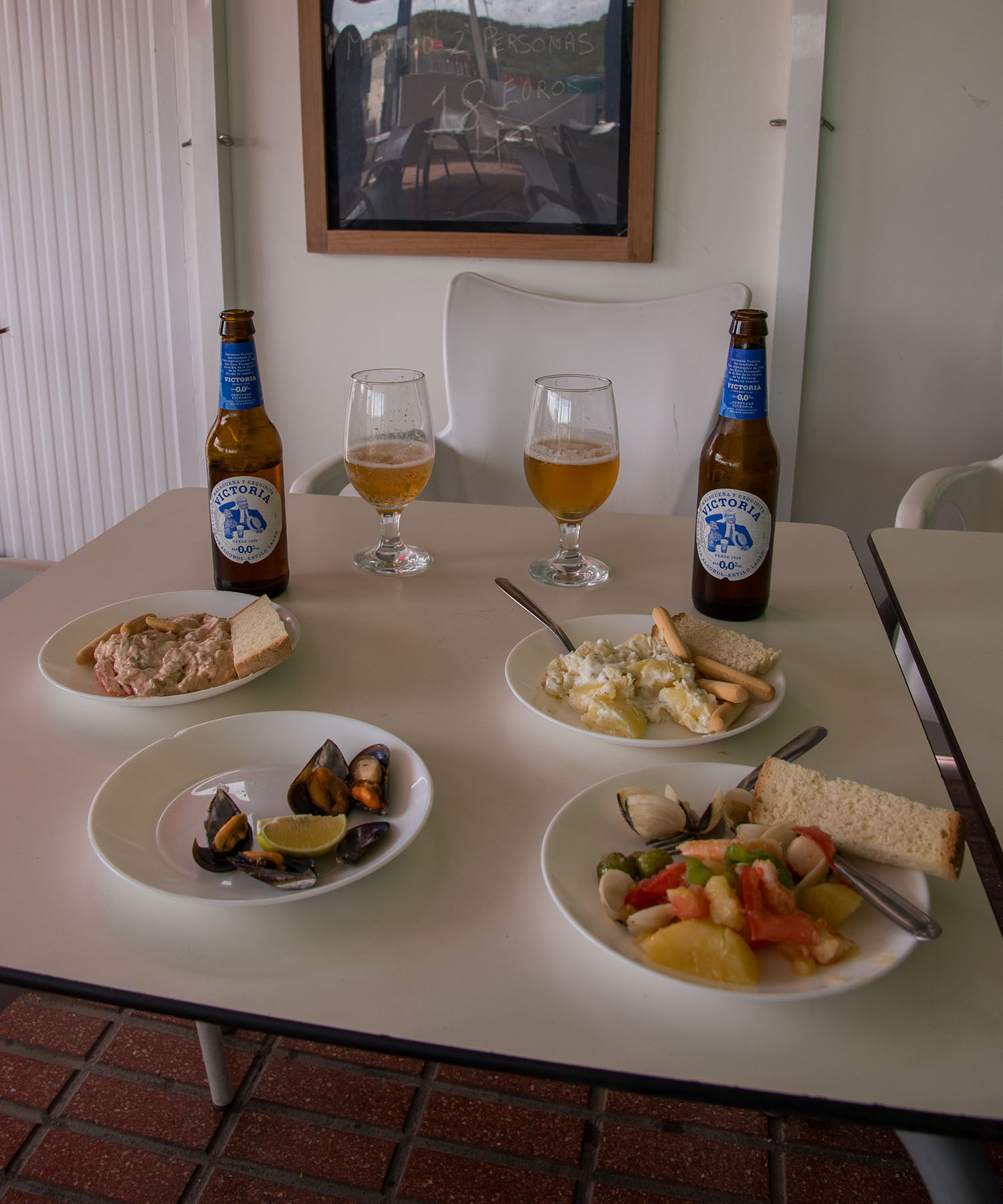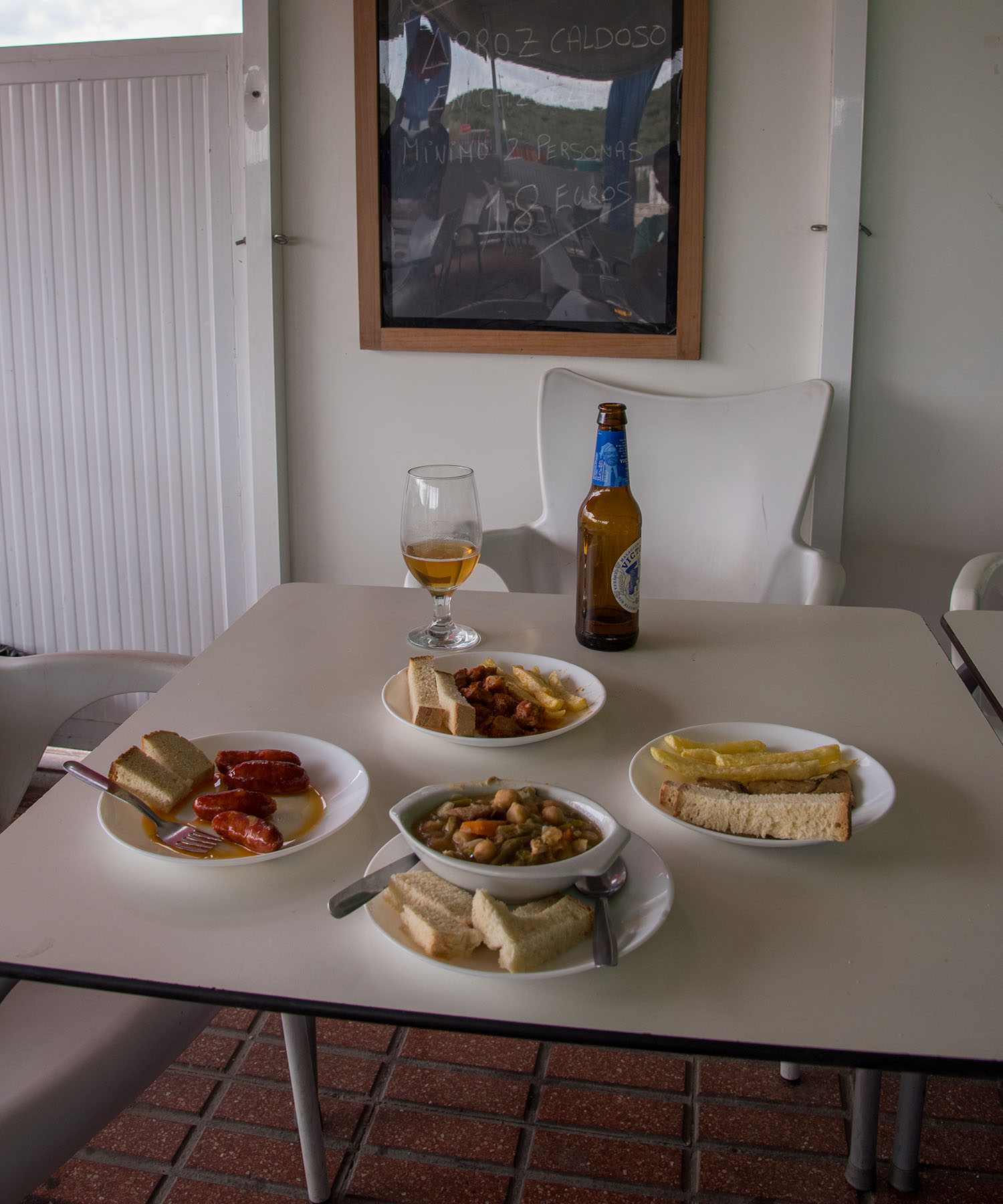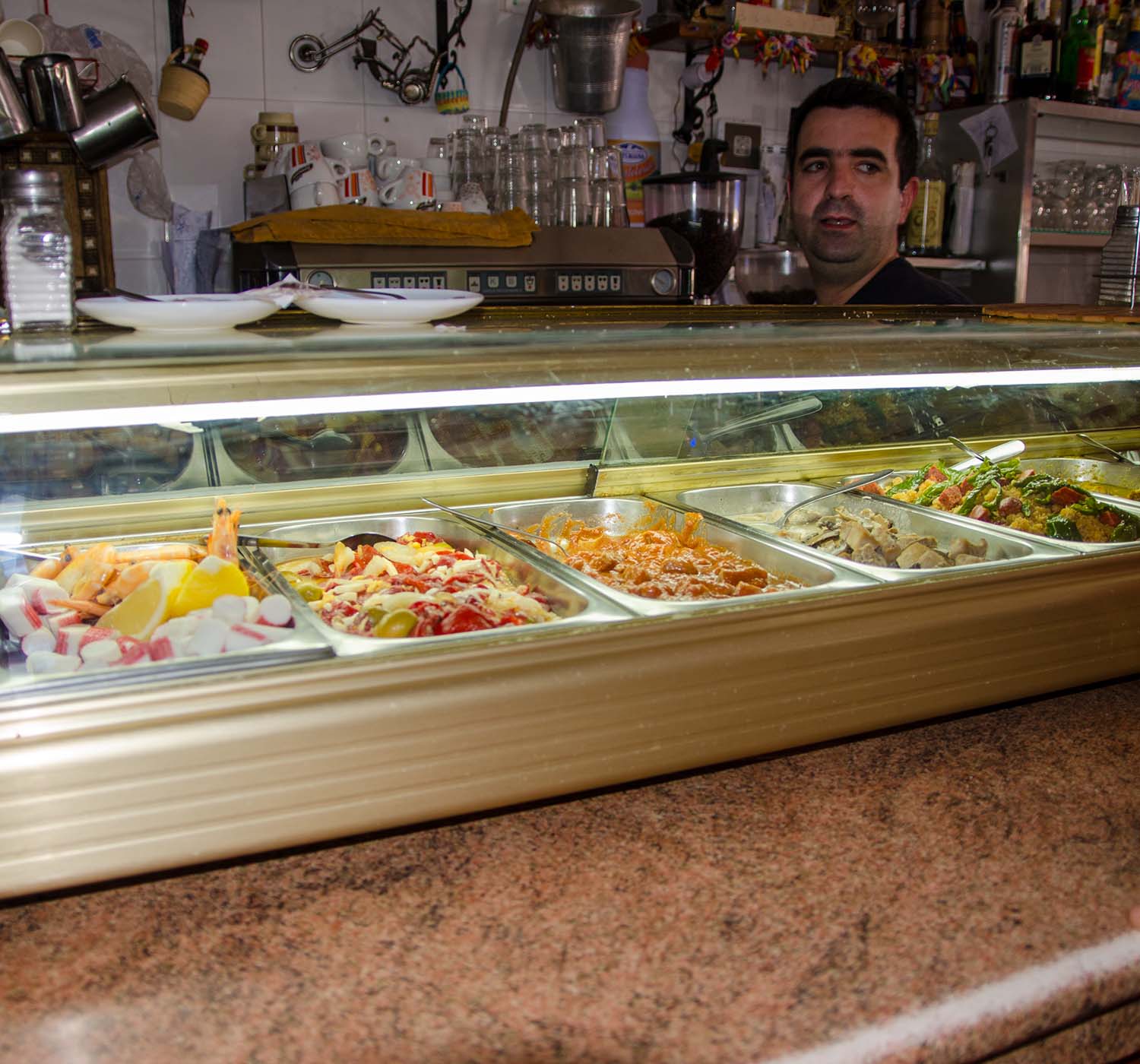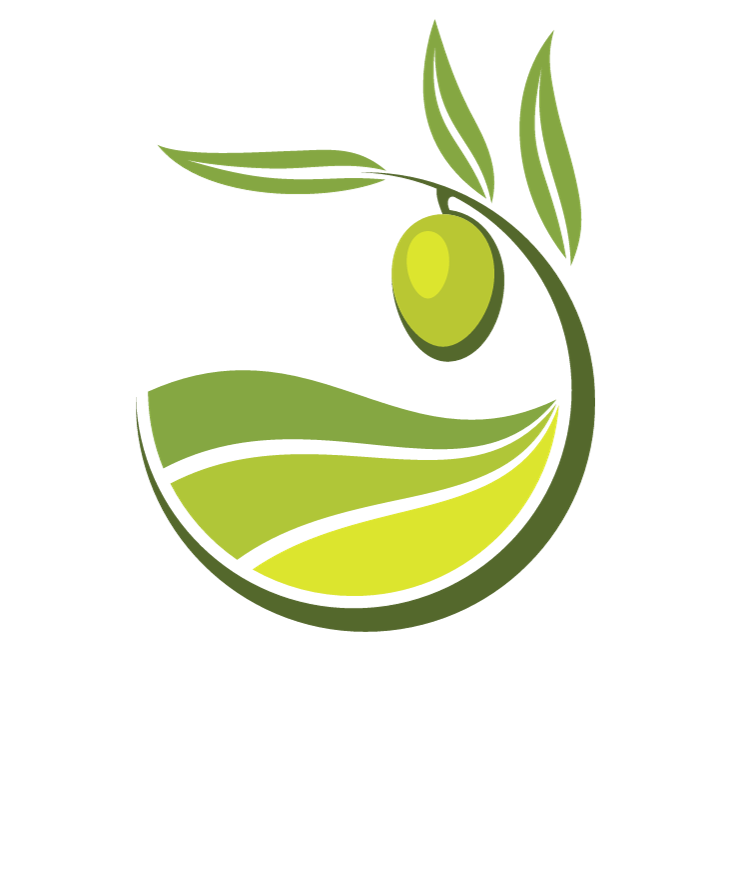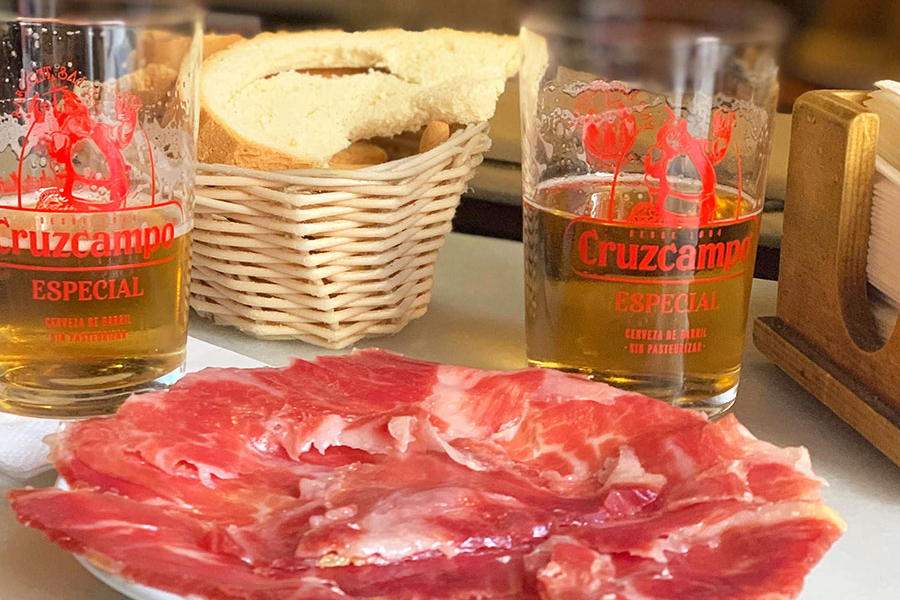A very Spanish cuisine
What could be more synonymous with Spain than tapas? Particularly in Andalucía, where the opportunity to enjoy a small dish of meat, fish, or vegetables washed down with a cold drink or café con leche is abundant.
I want to share with you some of the tapas we may encounter on our walks, but first, I'd like to provide a brief history. The Wikipedia Page for tapas (alimento) provides a detailed account of the history and traditions of tapas, and I highly recommend checking it out. I've highlighted three paragraphs from their page that help understand the origins of a tapa.
"It is often argued that the etymological origin of the word Tapa comes from the ancient custom of covering wine glasses and cups in taverns and inns with a piece of bread or a slice of ham to prevent flies and mosquitoes from entering or dust from settling inside"
"The Tapa, as we understand it today, was born in a modern era after the period of scarcity caused during the Spanish Civil War. However, it is possible to think that it is an old custom in Spain to eat small bites with which to eliminate hunger"
"Tapa evolved from a more basic form of appetiser to a particular way of understanding cuisine, which is what it is today. Establishing its origin in Spanish culinary history is complicated because its concept has changed over the various periods. It is possible that the Tapa was born with the appearance of bars that began to serve them as a courtesy to customers and that, with the Tapa being salty, it encouraged the consumption of more drinks"
Andalucian Tapas
I wondered if certain tapas dishes would be considered typically Andalucían, and indeed, there are several. There's a good chance you'll get to enjoy a few of them during your walking holiday, which includes Ensaladilla, Salmorejo (Callo), Espinacas con garbanzos, Pescaíto frito, Jamón ibérico, Chicharrones, Mojama, Tortillitas de Camarones, and Langostinos.
Check out the Curate Trips Website, which lists these popular tapas, and prepare to drool as you read their descriptions.
Tapas on our walks
The tapas we will have the chance to enjoy will vary from village to town, throughout the seasons, and sometimes even daily. The smaller bars we may visit only have a few tapas, with Jamón Serrano and semi-cured cheese always available. We may be spoiled with a dozen or so dishes in the busier and larger bars.
Inland versus Coastal
I believe there is a noticeable difference in the availability and variety of tapas along the coast compared to further inland. It makes sense that coastal restaurants and bars, which are designed to attract the many tourists who visit each year, would focus more on menu items.
Inland, in the villages and smaller towns, which may be frequented more by the locals and where the seasonal workers collecting the olives are nearby, tapas are more prevalent. Here, you are more likely to find the tapas familiar to Andalucía and specialities unique to each bar. In Periana, I tried a tapa of bread, cheese, and marmalade. As strange as that combination sounded, it was absolutely delicious.
Local Tapas
What better way to describe the tapas you can enjoy during your walking holiday than for me to visit several bars and restaurants we stop at and highlight what each has to offer? It was a tough assignment, one I took grudgingly!
Bar El Campillo, Riogordo

This is by far one of the quirkiest tapas bars you may visit. Owned by Luis and his wife, Toni, this bar is in a petrol service station just outside the town of Riogordo. It is adjacent to the link road from the Torre del Mar coastal town to the A45 Autovia, located beneath the Pedrizas pass, which provides access to Granada, Seville, and Córdoba. Arriving here for the first time, you might feel slightly surprised that we are stopping for tapas.
As you approach the bar, several tables are arranged outside, only metres from the fuel pumps. The agricultural workers, taking a break from collecting olives, sit there smoking cigarettes while enjoying their drinks and food. Before entering, you can sense this is a rather special and unique restaurant with a charm of its own.
Stepping inside the bar, you can understand why it is quirky. It feels cluttered at first glance. Two of the walls display pictures of vintage SEAT cars, along with other random paraphernalia. The serving bar features display cabinets showcasing tapas and pastries, with liquor bottles displayed on shelves above the coffee machine. It seems that every available space has been utilised.
The long counter displays the tapas, which, depending on the time of day, can consist of cold meats, cheeses, fish, and salads. The hot tapas are served from midday and include chopped pork in sauce (carne con tomate, carne con salsa, carne con champiñones) or stews like estufado and callo. Other tapas may include chicken wings in sauce, small pieces of chopped pork ribs, chopped liver, rabbit, squid, and a salad of octopus (pipirrana). Additionally, there are migas (breadcrumbs fried in pork fat, accompanied by chorizo, green peppers, and egg), as well as the special tapas unique to Bar El Campillo.
On the day I visited, Louis was putting them on the counter. To save time, I started with a plate of Jamón Serrano, olives, and a 0% Victoria Beer.
I’d asked Louis to bring out a section of tapas, with a short time between each course, and I knew I wouldn’t be disappointed!
The first tapas were cold and featured a theme of seafood: a plate of mussels, a prawn cocktail mix, potatoes in a garlic mayonnaise sauce, and a salpicón de mariscos (mixed shellfish).
With those tapas cleared away, the next was soon on the table. Hot meat-based tapas of delicious chorizo sausages, diced pork in tomato sauce, pork loin in a sweet gravy, and a pressure-cooked pork stew (Cocido Olla).
Small pieces of bread came with most tapas, perfect for mopping up the gravy and sauces in which the tapas were cooked.
On this day, I will admit that I did have help eating the tapas, and even so, I did not have space for anything else.
Bar El Campillo is not directly on any of our walks, but we pass it when travelling from the Hotel Arco del Sol to the Coast, and several walks to the north allow us to stop here at the end of the day.
